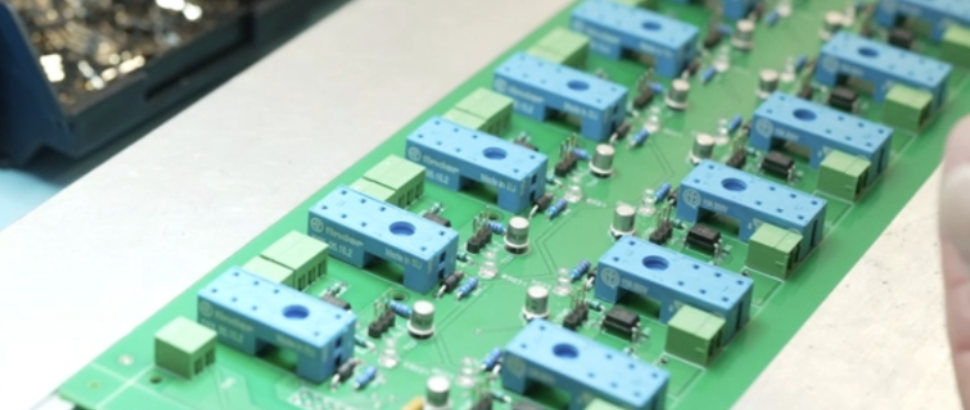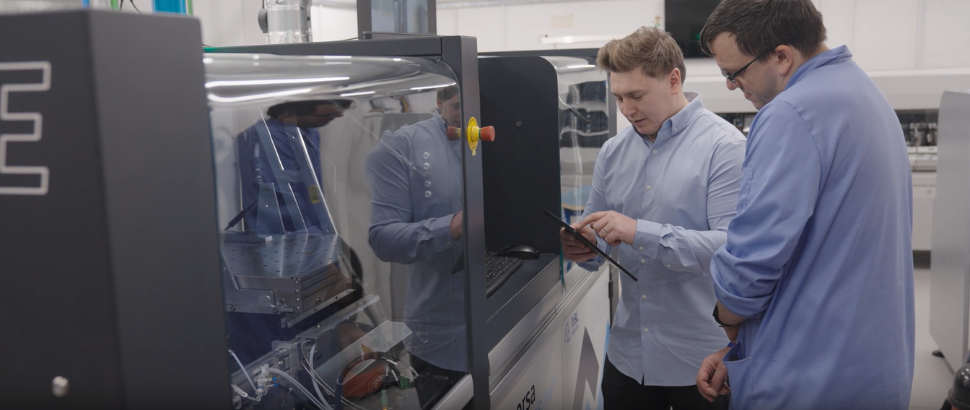News, Blogs & Articles

Why Your Assembly Partner Should Control Component Procurement
Case Study
October 21, 2025
When you're getting PCBs assembled, there's a tempting logic to buying your own components. You feel like you're in control. You might think you're saving money. And if you're using something proprietary or unusual, it seems to make sense to source it yourself.
But here's the thing: we see projects delayed, budgets blown, and perfectly good circuit boards binned because of component procurement problems. Not assembly problems. Not design problems. Problems that happened weeks before anything arrived at our facility.
Let's talk about what actually goes wrong when clients handle their own component sourcing, and why handing this job to your assembly partner isn't giving up control, it's getting your boards built properly, on time.
The Counterfeit Problem Nobody Wants to Discuss
You've found a great price on those microcontrollers. The distributor's website looks legitimate enough. The components arrive in proper packaging. Everything seems fine until we try to assemble them and something's not quite right.
Counterfeit components are everywhere in the supply chain. And they're getting harder to spot.
We're not talking about obviously fake parts in dodgy plastic bags. Modern counterfeits come in authentic-looking packaging, with convincing date codes and manufacturer logos. They might be:
- Remarked lower-grade parts sold as premium components
- Salvaged chips from scrapped boards, cleaned up and resold
- Completely fake semiconductors that won't work at all
- Parts from grey market sources with unknown storage conditions
When you buy components from unfamiliar sources - especially online marketplaces or brokers you haven't used before - you're taking a gamble. And you won't know you've lost until we're halfway through assembly.
Professional assembly houses have established relationships with authorised distributors. We know which sources are reliable. We've got accounts with franchised suppliers who guarantee authenticity. When something goes wrong, we've got recourse. When you're buying as a one-off customer from a random website, you've got nothing.
When the Data Sheet Doesn't Match What Arrives
You've ordered the right part number. Or at least you think you have.
Then the components arrive and we notice something's off. The package is slightly different. The pin pitch doesn't match. It's the right component family, but the wrong variant. Or it's been discontinued and replaced with a newer version that has different specifications.
This happens constantly:
A client orders 0603 resistors but receives 0402s because they didn't notice the size code in the part number. We can't assemble them - the pads are wrong.
Someone specifies a through-hole component when their board is designed for surface mount, or vice versa. They order the part based on the schematic symbol without checking the physical package.
The datasheet shows one footprint, but the actual component has been updated by the manufacturer and now comes in a different package. The part number's the same, but it won't fit the board.
A component has multiple variants - industrial temperature range, automotive grade, different voltage ratings - and the wrong one gets ordered. It might physically fit, but it won't meet the specifications.
When we procure components, we're checking every detail against your design files. We know what package you need because we can see your PCB layout. We catch mismatches before anything gets ordered. When you're sourcing parts yourself, you're often working from a bill of materials without that visual reference, and mistakes slip through.
The Timing Nightmare
Here's a scenario we see at least twice a month:
A client books assembly for a specific date. Everything's scheduled. Then, three days before we're meant to start, half the components still haven't arrived. Or they've arrived at the client's office, but now they need to be checked, sorted, and shipped to us. The assembly slot gets missed. The project's delayed by weeks. If it's a time-sensitive prototype, the whole schedule collapses.
Component procurement isn't just about ordering parts. It's about orchestrating deliveries from multiple suppliers so everything arrives at the right place at the right time.
When you're sourcing your own components:
- You're ordering from different distributors with different lead times
- Some parts ship next day, others take three weeks
- You're managing multiple deliveries to different addresses
- You need to check everything's arrived and correct before sending it to us
- If something's wrong or missing, you're starting the whole process again
We do this every day. We know typical lead times for thousands of components. We know which distributors are reliable and which ones routinely ship late. We can order everything to arrive in one delivery, at our facility, checked and ready to go straight into assembly.
When we control procurement, your assembly date is your assembly date. Not an optimistic target that depends on whether a box turns up from Germany on time.
The Hidden Costs That Add Up
Let's be honest about money, because that's usually why people want to source their own components in the first place.
You see our component prices and think you can do better. Sometimes you can find parts cheaper, especially if you're comparing our quoted prices against the absolute lowest price you can find online. But here's what you're not accounting for:
Your time. Someone at your company needs to source hundreds of components, compare prices, place orders with multiple suppliers, track deliveries, check everything when it arrives, organise shipping to us, and deal with any problems. That's not free. If you're a small company, that's your time - time you're not spending on engineering or sales or actually running your business.
Shipping costs. When you order from five different distributors, you pay shipping five times. Then you pay again to send everything to us. We're placing orders that combine components for multiple projects, and our shipping costs per project are minimal.
Minimum order quantities. Need 10 resistors? Many distributors won't sell you 10. You'll buy 100 or 1,000. We're buying in volume constantly, so we've either got common components in stock or we're ordering them as part of a larger batch.
Returns and replacements. When something's wrong, you're dealing with returns yourself. Our established distributor relationships mean we can get problems sorted quickly, often with next-day replacements.
Assembly delays. This is the big one. If your component sourcing causes a delay, you might miss a product launch, lose a customer, or have your engineering team sitting idle. We've seen missed assembly slots cost companies far more than they "saved" by sourcing components themselves.
When you add it all up honestly, professional procurement usually costs less overall. Even when our component prices look higher on paper.
When Supplying Your Own Components Makes Sense
Look, we're not saying you should never supply your own components. Sometimes it genuinely makes sense:
Proprietary parts. If you're using custom components, specialist items, or parts you manufacture yourself, obviously you'll supply those. We'll procure everything else.
Long-lead specialty items. If there's something with a 20-week lead time that needs ordering months in advance, it makes sense to get that ordered early and consigned to us. We'll handle the standard components with normal lead times.
Pre-purchased stock. If you've already got a reel of microcontrollers from a previous build, we'll use them. No point buying more.
Intellectual property concerns. If you're genuinely worried about your design being visible to a distributor, consigning specific ICs is understandable. Though in reality, professional distributors see thousands of designs and couldn't care less about yours.
The key is being selective. Consign the parts that make sense to consign, and let us handle the rest. Most problems happen when clients try to source everything themselves to save money, and end up with delays that cost far more.
What Professional Procurement Actually Looks Like
When we handle component procurement, here's what happens:
We review your bill of materials against current availability and lead times. If something's got a 12-week lead time or is discontinued, we flag it immediately - before you've committed to the design.
We check for availability across our authorised distributors and quote realistic prices based on current stock levels, not theoretical pricing that might not be available when we actually order.
We verify every component against your PCB design files to catch package mismatches, voltage rating errors, or specification problems before ordering anything.
We place orders timed so everything arrives together, usually 2-3 days before your assembly date. Not so early that we're sitting on your components for weeks (tying up your money), and not so late that a delayed shipment causes problems.
When components arrive, our incoming inspection checks them against the order. We're looking for packaging damage, incorrect parts, quantity errors, and any signs of counterfeit components.
If there's a problem, we sort it immediately. We've got the distributor relationships to get replacements fast-tracked. We might have an alternative in stock already. We certainly don't wait for you to notice something's wrong and then scramble to fix it.
Everything goes into kitted storage, organised by your project, ready to move straight to assembly. No sorting through boxes, no checking part numbers against spreadsheets, no last-minute panic about missing components.
Making the Right Choice for Your Project
The question isn't really whether you can source components yourself. Of course you can. The question is whether it's the best use of your time, money, and attention.
For most projects, professional procurement means:
- Your boards get assembled on schedule
- You spend your time on things that matter to your business
- The total project cost is lower when you account for time and delays
- You avoid the heartbreak of binning assembled boards because counterfeit components failed testing
If you want to maintain control over specific components for valid reasons, we'll work with that. But if you're doing it primarily to save money, you're probably costing yourself more than you realise.
The assembly process is complicated enough without adding procurement headaches. Let us handle what we're good at, so you can focus on what you're good at.
Want to discuss component procurement for your next project? Get in touch and we'll work out the approach that makes sense for your specific situation.
News, Blogs & Articles















